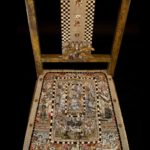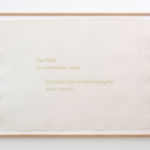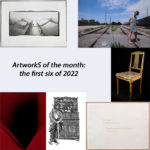 As usual in July, we remind the first six artworks of the month of the current year. The first half of the year was dominated by photography, since three works came from this field. However, each approach is different. Moreover, we presented a mosaic-decorated chair, an ink drawing and a text-based work. With this review, we would like to thank all artists for their support.
As usual in July, we remind the first six artworks of the month of the current year. The first half of the year was dominated by photography, since three works came from this field. However, each approach is different. Moreover, we presented a mosaic-decorated chair, an ink drawing and a text-based work. With this review, we would like to thank all artists for their support.
Even though published in January, Amélie Viale’s photo “Allez viens ! on part en vacances.” (Come on! we are going on holiday.) fits very good into the summer season. Here the artist is dragging at the cable of an iron as one pulls the leash of a stubborn dog. Will she succeed to convince the reluctant domestic appliance to follow her on her trip?
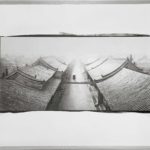 With “Pingyao” Irene Kung takes us on a journey to China and to the ancient city with the title-giving name. However, it is not only a sensitive presentation, but at the same time, a kind of time travel. On one hand, the photography represent the well conserved historic buildings dating from the times of the Ming and Qing dynasties. Additionally, the technique refers to the beginnings of photography.
With “Pingyao” Irene Kung takes us on a journey to China and to the ancient city with the title-giving name. However, it is not only a sensitive presentation, but at the same time, a kind of time travel. On one hand, the photography represent the well conserved historic buildings dating from the times of the Ming and Qing dynasties. Additionally, the technique refers to the beginnings of photography.
Also Séverine Gambier’s chair “Sauve qui peut (la vie)” (Save who can (the life)) has references to the past. The seating furniture is decorated with fragments of ancient porcelain and faience plates. Nonetheless, it is much more than a decorative element, since it also talks about the artist’s personal history and conflicts in the society.
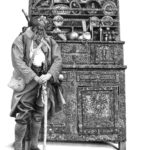 Due to a collaboration with Séverine, Mad Meg took up some of the fragmented mosaics and integrated them into her monumental ink drawings. In “Patriarche n° 1418 – La gueule cassée” (Patriarch n° 1418 – The broken Face) she copied two original mosaics and inserted them as doors of a cupboard. This piece of furniture and its content functions as background and illustration of one of her patriarchs. Here it is the prototype of a soldier from First World War.
Due to a collaboration with Séverine, Mad Meg took up some of the fragmented mosaics and integrated them into her monumental ink drawings. In “Patriarche n° 1418 – La gueule cassée” (Patriarch n° 1418 – The broken Face) she copied two original mosaics and inserted them as doors of a cupboard. This piece of furniture and its content functions as background and illustration of one of her patriarchs. Here it is the prototype of a soldier from First World War.
Thyra Schmidt’s text-based work “Körper” (Body/Bodies) talks about presence and absence of a beloved other. Despite a spatial distance, the physical proximity is still perceptible in the beginning, but the alienation complicates the situation. Additionally to the content of the writings, the presentation reflects the intimate content of the texts.
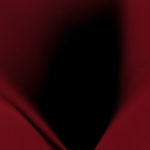 Fiona Annis’ luminogram “A portion of that which was once everything (De-siderare II)” also expresses a longing. However, it is not only the yearning for the stars (latin: siderare = star), but a deep reflexion about our society and other ways of being than the current.
Fiona Annis’ luminogram “A portion of that which was once everything (De-siderare II)” also expresses a longing. However, it is not only the yearning for the stars (latin: siderare = star), but a deep reflexion about our society and other ways of being than the current.
Now we hope you will enjoy your summer and will be back with us in September when we present a new artwork of the month.


